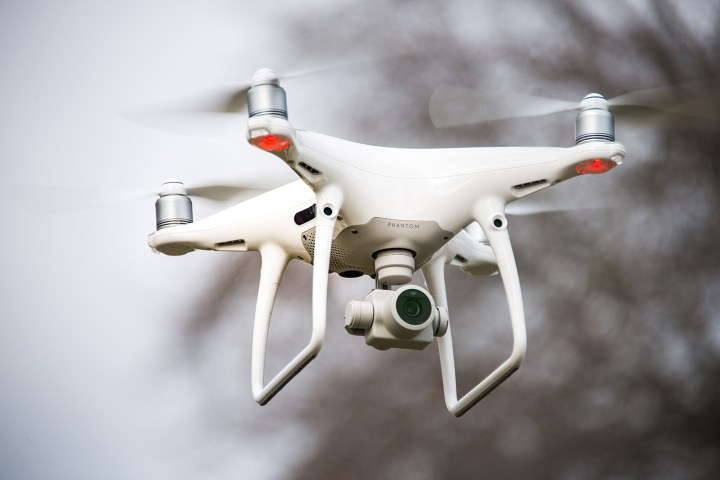
The incident occurred toward the end of last month and involved an Army UH-60 Black Hawk helicopter and a Phantom 4 drone. The drone came off worse.
DJI’s camera-equipped Phantom 4 launched last year and has proved hugely popular with consumers looking for a sophisticated quadcopter at a decent price.
The helicopter, which was carrying security officials to the United Nations headquarters in Manhattan, landed safely at Linden airport in New Jersey, but an inspection revealed damage to its main rotor blade, window frame, and transmission deck, National Transportation Safety Board (NTSB) officials told USA Today.
How do they know it was a Phantom 4 that struck the helicopter? Because they recovered parts of the quadcopter (pictured) from the helicopter after it landed.
Those examining the incident managed to track down the operator of the drone, who’s been cooperating with the investigation. The operator’s flight logs are also being examined.
Specific details linked to the incident are yet to be revealed, but the helicopter’s pilot and passengers will be thanking their lucky stars that the aircraft stayed flying after coming into contact with the quadcopter in midair.
Incidents involving drones and manned aircraft are on the increase in U.S. airspace, though this is believed to be the first report of a direct hit between the two.
Data compiled by the Federal Aviation Administration (FAA) between February and September 2016 reveals 1,274 possible drone sightings by U.S. air traffic facilities, compared to 874 for the same period a year earlier. One near-miss incident in 2016 involved a Lufthansa passenger jet coming in to land at Los Angeles international airport.
The authorities are considering a myriad of solutions to try to prevent drones from coming close to airports. Current options include everything from net-firing bazookas to flying drone-hunter bots and even eagles that are trained to pluck rogue flying machines straight out of the sky.
DJI spokesperson Adam Lisberg told USA Today his company is working with investigators in a bid to find out exactly what happened in the recent incident. Aware of the growing concern among FAA officials regarding dangerous drone flights by irresponsible pilots, Lisberg said, “We have always instructed drone operators to obey the laws and regulations applicable to drones in their jurisdiction, and we urge our customers to fully educate themselves about how to fly safely.”
Lisberg added, “Millions of people safely use drones for personal and professional uses, and we hope they will join us in our commitment to ensuring drones remain a benefit to society.”



